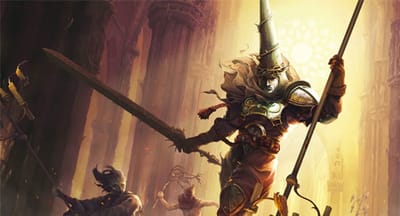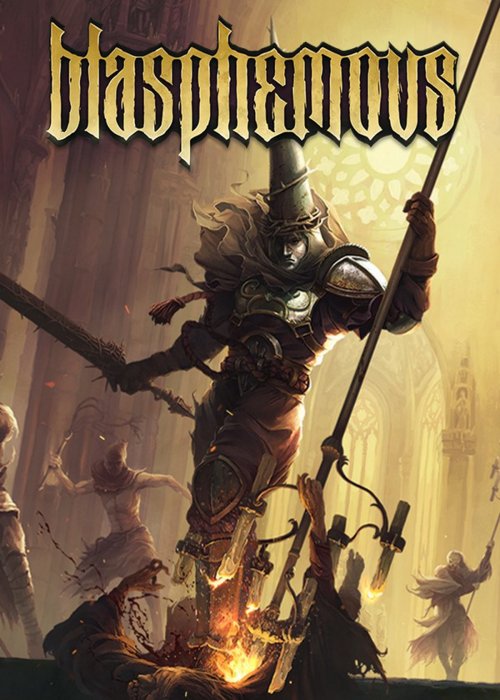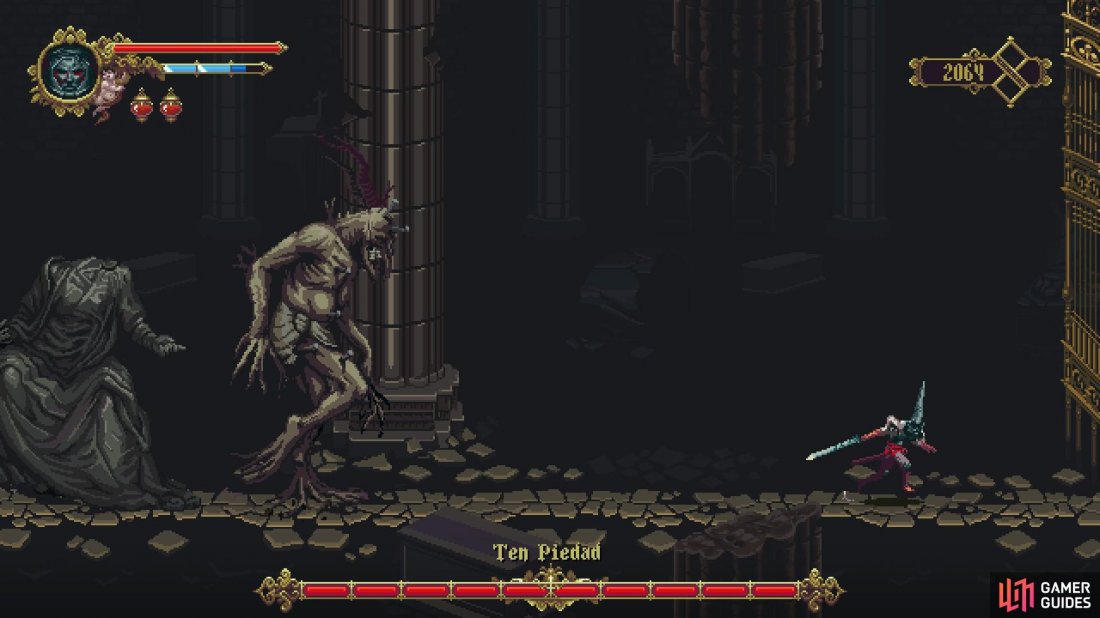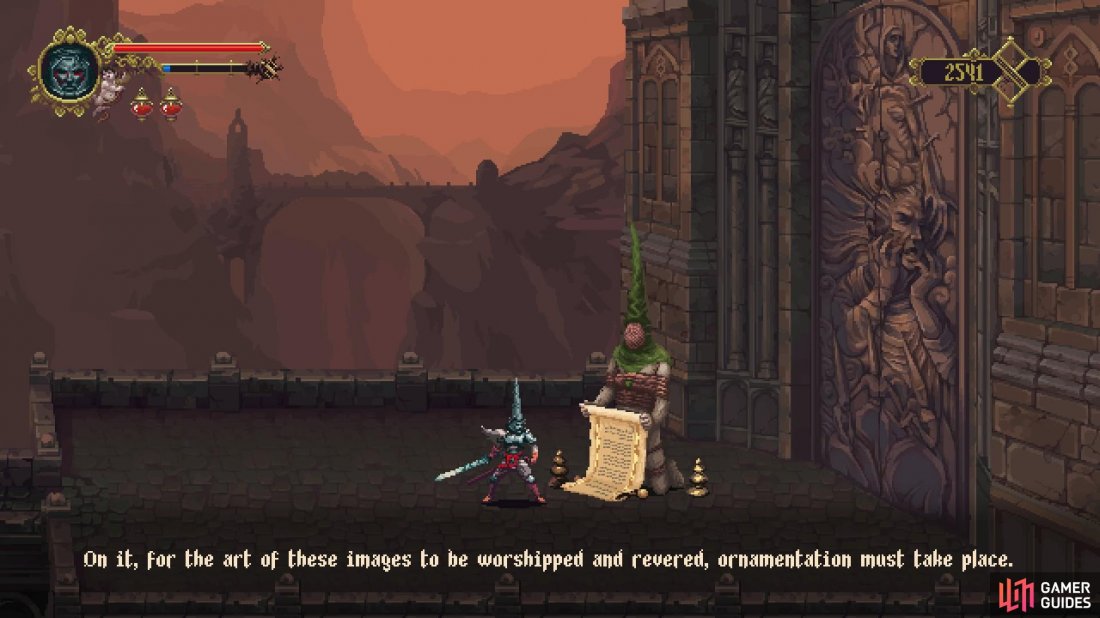
Pros
- Fantastic art style
- Captivating lore told through items
- Impact of combat is satisfying
Cons
- The map screen could do with more information
- Interesting decision to give the dodge roll a cooldown
- Is perhaps a bit too grotesque at times
The tail end of this generation has seen a resurgence of the metroidvania genre with popular releases such as Bloodstained and Hollow Knight to name just a few. Lots of developers have taken up the mantle of trying to push the genre in new and exciting ways and The Game Kitchen have attempted their take on the genre with Blasphemous, a game with a gorgeous art style seeped heavily in religious overtones while incorporating pieces of the Soulslike (games influenced by Dark Souls) genre to add a nice little twist off it. It’s a bold attempt, a few other metroidvania have attempted it with middling degrees of success and Blasphemous is certainly ambitious.
The backdrop of the story sees you control The Penitent One during the Age of Corruption in a land rife with religious belief. The Great Miracle has failed and it’s up to The Penitent One to travel the land to seek out the Golden Visages. The game has a heavy religious overtone and delves deep into all the tones, after all, a title such as Blasphemous should tell the story in its own right. The Penitent One himself isn’t characterized outside of being a devout follower and you’re left to your own devices as to how to set upon your task. Right from the outset you’ll notice that you’re not the only one of your kind, just the last surviving one and the game opens in a gory spectacle. Indeed, the gratuitous amount of blood and the manner in which you dispatch your foes is also evident, the combat finishers often decapitate or slice them in half and you’ll also witness other grotesque imagery throughout the story. The story itself is told in a nice mix of voiced dialogue and animated cutscenes which, with the gorgeous art style, looks fantastic.
There are many traps and puzzles to navigate.
The world itself is fantastically designed, it’s all interconnected and at the beginning of the game, after being given your first objective, you have a bit of freedom in the order of which you challenge the areas. Three separate areas are available to begin with and all with varied locales of which you can stop halfway through and attempt one of the other paths if you’re struggling with the particular enemies there. I found that I was given a side objective when I started tackling one path before changing my mind to head down another which I proceeded to finish. Upon returning to the first path, I saw that I’d changed the world in a way that prevented me from completing that particular side objective. Mildly disappointing there, it did reassure me that this is a game that would be ideal for repeat playthroughs due to the open nature presented at first. There are also countless secrets hidden in the world such as helping villagers with their requests for great rewards, some of which will reward Relics, powerful pieces of equipment that alter the way you interact with the world. One such Relic will cause you to see hidden platforms that wasn’t there before. This all plays into the metroidvania theme of the game where you’ll find these upgrades lead into new paths with more upgrades, all in a satisfying flow, it’s exciting to receive a new upgrade and think back to where you might make use of it.
That does however bring up a problem with Blasphemous, the map screen. As any fan of metroidvanias will tell you, the map screen is incredibly important, especially if you intend to hide secrets or areas that you’ll need to return to later. Each area is color coded on the map along with text detailing what the area is and that’s fine, as is the display of places to rest, upgrade your abilities and teleporters. The real issue here is there’s no marker or indication that there was an area that needed another ability on the map, you’ll be left to your own devices to remember if there was an area that you couldn’t access before. Some are fortunately easier to look for, you’ll notice on the map that you could’ve continued in another direction for example however some have hidden paths on the same screen meaning that you’ll need to remember if there was a platform that was too high or not there at all. As the game world continues to grow as you reach the later stages of the game, this becomes more of a problem and really highlights the issue with the game’s map. Another slight issue was opening the map in a dark location as soon as you enter, this would cause the map to become darkened and almost unreadable, forcing me to retreat to the previous screen to get a better grasp on my location.
The boss fights are balanced fairly.
At its core, the combat is extremely satisfying and one of the highlights of Blasphemous due to the impact of your strikes and the bloody spectacle that follows. The Penitent One has great weight to his character and you won’t be able to simply dash across the screen one shotting everything in your path. You only have the one weapon available to you, which increases in strength as you find shrines dedicated to it and you’ll be able to use the currency you obtain from defeating the enemies to purchase combat abilities which further flesh out how it works. You’ll purchase abilities such as a dodge attack making it easier to close the distance on your foes or a plunging strike, all abilities that are easy to use but tough to master. On top of that, The Penitent One can deflect the blow of his enemies and follow it up with a slash that will either kill them or severely weaken them. Finally, you have a dodge slide at your disposal with a few invincibility frames that you can use to slide past an enemy and attack from behind. There is a catch to this however, you’ll have a short cooldown before you can use the dodge again but there are pieces of equipment out there that will shorten this to be less of an issue. Indeed, many of the enemies will kill you easily if you decide to stand in from of them and try to trade blows, instead you’ll need to dodge through them or deflect their blows if you want to get through an encounter unscathed, thankfully the parry is forgiving and easy to use. As you gain new abilities, you’ll be able to add finishers to you basic combo and it all flows really well to make every enemy you fight satisfying to defeat be it putting your skills to use or witnessing the numerous creative ways The Penitent One dispatches them.
Your basic combat isn’t all you have available to you however, you’ll be able to find Prayers out in the world, be it from solving clever puzzles in a hidden area or helping a villager, these Prayers change up how you approach combat. You can only equip one at a time but they can be changed at will in the menu and all you’ll require is some Focus, a gauge that fills up from attacking enemies or harvesting some of your own health. Some of the Prayers early on give you other means of taking out enemies such as a Prayer that will shoot a shockwave along the floor, hitting enemies before you even begin combat. Alternatively, you can find some Prayers that will buff your attack speed or damage, all of which will be useful at different times.
All of the dialogue is voiced and fits the theme perfectly.
This leads perfectly into the itemization in Blasphemous, one that is done incredibly well. Aside from your Prayers and Combat Abilities, you’ll also find items that can be attached to your Rosary Beads and function like accessories in most other games granting increased life, defense or even more useful affects like the aforementioned dodge cooldown. You’ll only be able to equip two to begin with but hidden out in the world are items that can allow you to extend that to equip many more giving you lots of choices on how you build The Penitent One. There are also the powerful Relics that can be found, of which any three can be equipped or switched at any time and these will affect the world around you, granting you the abilities needed to access new areas or even see the health of your foes. You can attach special items to your blade itself, granting new and game changing effects but at the cost of a penalty as well, these are more situational and you’ll have to decide if you really want to deal with the penalty to gain the boon from it in the first place. These all give you a fantastic amount of depth in building The Penitent One and you’ll find yourself coming up with new and exciting ways to approach the challenges ahead. What makes these items even more fascinating is every single item in the game comes stacked with lore information on the world or the inhabitants residing there, really fleshing it out and there are many collectibles that help fill this out more. Finally, you’ll notice from the outset that you have two bile flasks available to you which when visiting a Shrine, will allow you to use them as potions to recover your health. These will always refill at said Shrines (think Dark Souls and the Estus Flask) and you’ll be able to find more out in the world to increase you healing capabilities.
The boss battles themselves are interesting encounters and are often of a grotesque spectacle. They come with high health pools so you’ll have to keep an eye on how you utilize your own healing throughout them. Truth be told however, save for one or two bosses, if you have a good grasp of the combat system then they shouldn’t pose too much an issue. Making full use of the dodge and parry functions will get you off to a great start and then the numerous amounts of ways to build The Penitent One will push the balance in your favor. This is not to dismiss the quality of the battles themselves, some are real spectacles and you’ll still find yourself easily dying if you’re not careful. There is an NPC you can find usually before a boss battle and asking them for their assistance will cause them to appear in the battle area. They’re can’t be hurt by any of the enemies attacks however they will cast a healing spell on you when you’re near death and out of healing flasks. Don’t come to rely on it too much however as it can take a while for the spell to be cast and in that time, you can easily suffer a fatal attack on you.
The music is excellent and another of the game’s strongest points, the soundtrack nails the atmosphere and the locales in which you visit. On top of that, the dialogue is all voiced and all of which is fitting with the theme of the game, this along with all the lore found in the items really brings the game to life and you’ll find yourself getting lost in the world The Penitent One find himself in. The game flowing at 60 fps keeps it feeling great and from suffering from the sluggish feel so many of the other games in this genre can have at times, leaving you to get on with your task at hand.
Unholy Pilgrimage!
Blasphemous is a great addition to the genre and it truly feels like a unique creation able to stand fine on its own without taking too much from other games out there. The world and lore are fantastic and enough to keep anyone with a passing interest engrossed to the very end.
Gameplay:
Sound:
Graphics:
Story:
Value Rating:





 Sign up
Sign up
No Comments